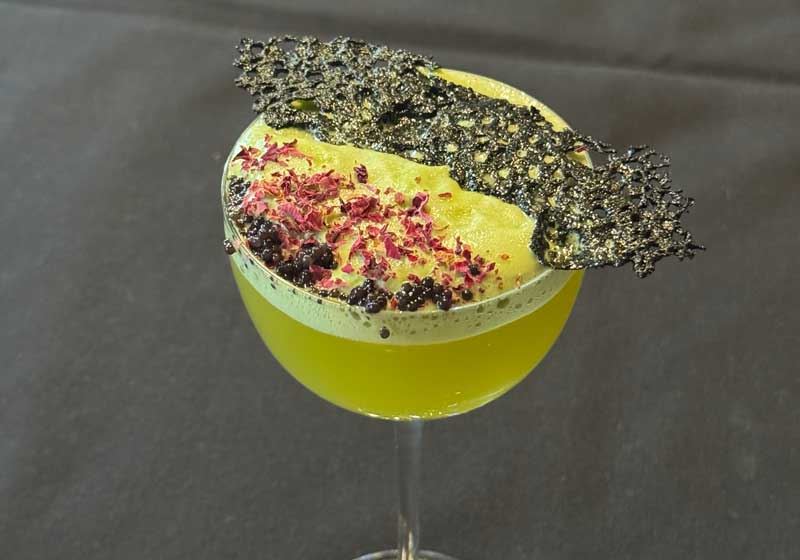By Marie-Antoinette Issa.
If there’s one thing that unites the Middle East (besides a shared love of strong coffee and even stronger opinions), it’s breakfast.
Not the rushed, grab-a-banana-on-the-up-and-go kind, but the long, lazy, family-style kind. The kind where the table is groaning under the weight of dips, bread, cheeses and something sizzling in a pan.
The kind that turns a meal into a memory. So, buckle your belt (or, maybe loosen it just a little) and enjoy this flavour-filled journey from Baghdad to Beirut, sampling the best breakfasts the Middle East has to offer.
Iraq – Kahi and Geymar
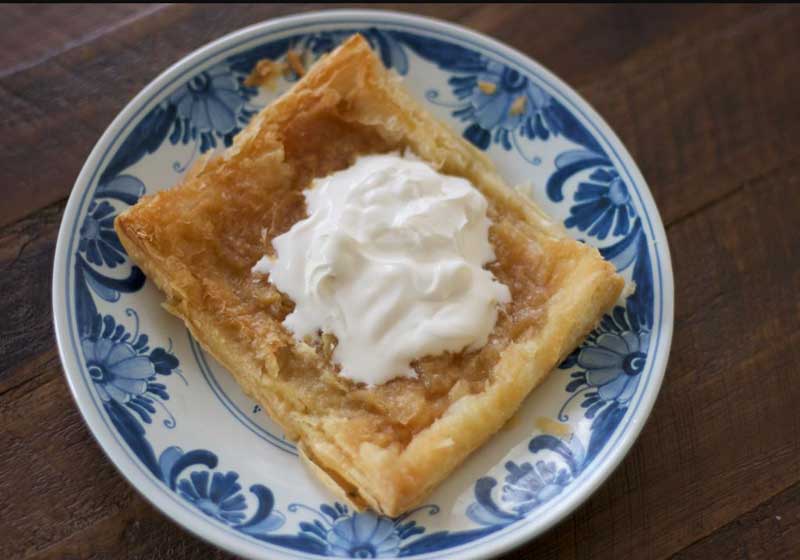
Breakfast in Iraq is as decadent as it is delicious. Kahi is a flaky, buttery pastry, similar to puff pastry but fried until golden and crisp. It’s served with geymer, a thick clotted cream made from buffalo milk, and drizzled generously with date syrup. It’s rich, messy and worth every indulgent bite. Pair it with sweet black tea and you’re instantly transported to an ancient Mesopotamian breakfast table.
Syria – Fatteh
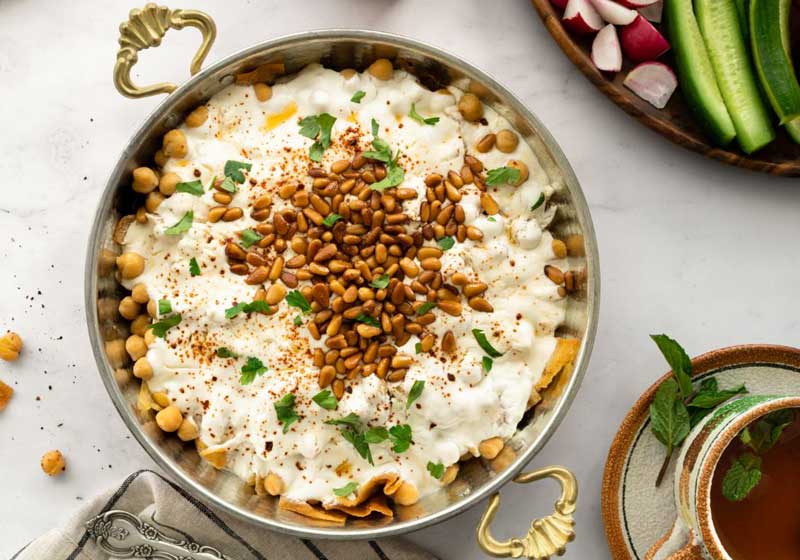
Photo credit: Forks & Foliage.
A specialty of Syrian breakfast is fatteh (also known as tisiyeh). This hearty, humble dish starts with torn pieces of crispy flatbread, then layers of warm chickpeas, creamy yoghurt, garlic and a generous drizzle of browned butter and pine nuts. Unlike its Egyptian cousin, the Levantine take on fatteh focuses on legumes as the main source of protein, with beef or lamb toppings not necessarily the main act.
Egypt – Ful Medames
In Egypt, breakfast is often a bustling, aromatic affair enjoyed on the go or shared at a family table. One of the most iconic dishes is ful medames, a satisfying stew of slow-cooked fava beans. Simmered with garlic, lemon juice, cumin and a generous drizzle of olive oil, the dish is often topped with chopped tomatoes, onions, chillies and sometimes a boiled egg.
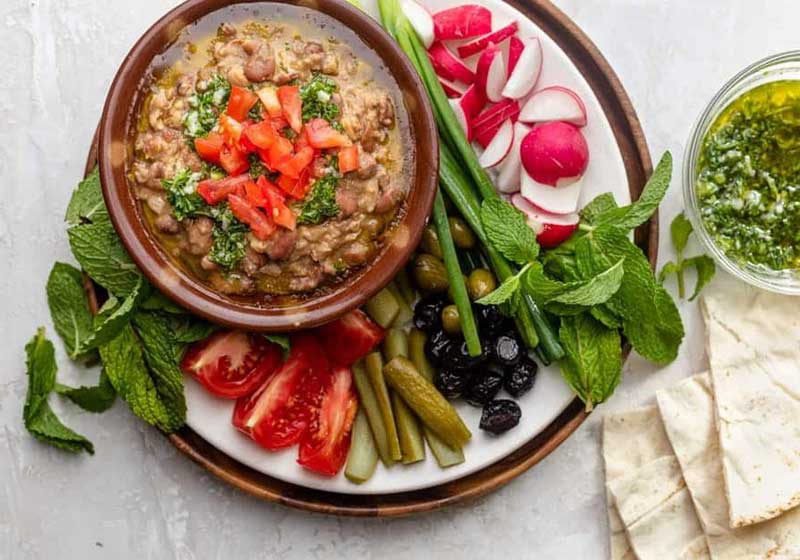
Photo credit: Feel Good Foodie.
Street vendors in Cairo serve ful from steaming metal pots, ladling it into bowls or stuffing it into fresh baladi bread for a quick, filling sandwich. Though it’s simple, ful medames is deeply satisfying - warming, protein-packed and endlessly customisable with pickles, tahini or a splash of hot sauce.
Jordan – Labneh and Za’atar
No Middle Eastern breakfast is complete without labneh - a strained yoghurt so thick it’s spreadable like cream cheese. In Jordan, it is traditional to serve with a swirl of olive oil, dusted with za’atar (a tangy, earthy herb blend) and scooped up with fresh-baked bread. Throw in slices of cucumber, tomato, olives and a few boiled eggs and you’ve got a breakfast that’s simple but soul-satisfying.
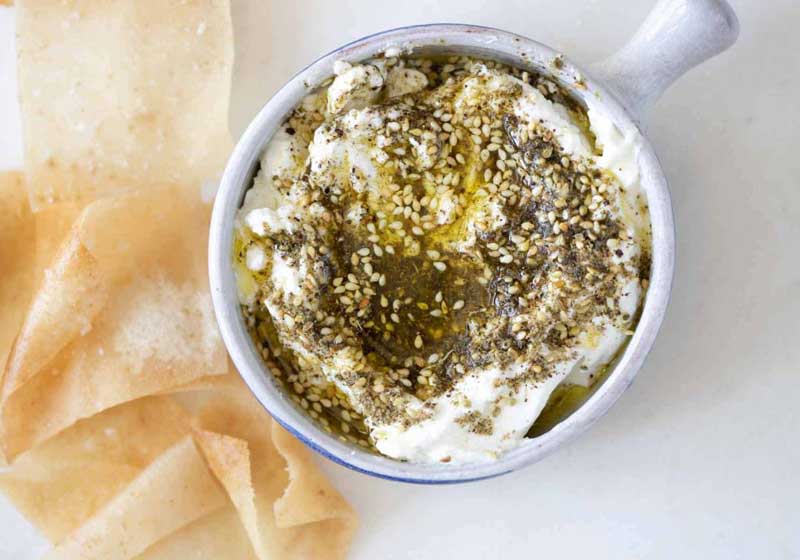
Photo credit: The Matbakh.
Honourable mention: falafel - deep-fried chickpea balls, often served with pita bread, pickled vegetables and tahini sauce - are also a popular AM plate in Jordan.
Palestine - Kaak bi knafeh
Kaak bi knafeh is a beloved Palestinian street food breakfast that combines two iconic elements: kaak, a sesame-crusted bread ring, and knafeh, a sweet, cheesy pastry soaked in fragrant sugar syrup. The warm, gooey knafeh is tucked inside the kaak like a sandwich, offering the perfect balance of crispy, chewy, sweet and savoury.
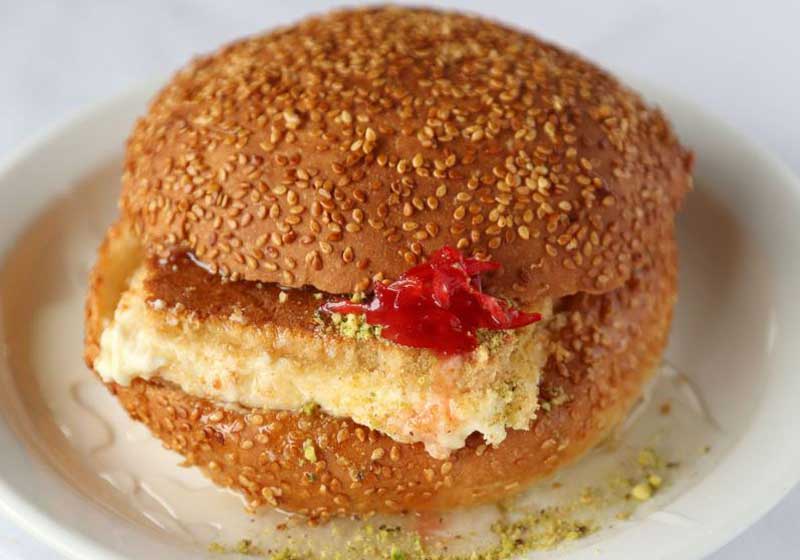
Photo credit: Balha’s Pastry.
Typically enjoyed with a strong cup of Arabic coffee or mint tea, it’s a popular morning treat in cities like Jerusalem and Nablus, where locals line up at bakeries for this indulgent start to the day.
Lebanon – Manoush
Beiruti breakfast is often handheld, hot and eaten in a hurry with manoush- Lebanon’s answer to pizza and arguably its most beloved breakfast - the main event. It’s a round flatbread baked in a wood-fired oven and topped with everything from za’atar to cheese (manoush bi jibin ) or minced lamb (lahim bi ajeen).
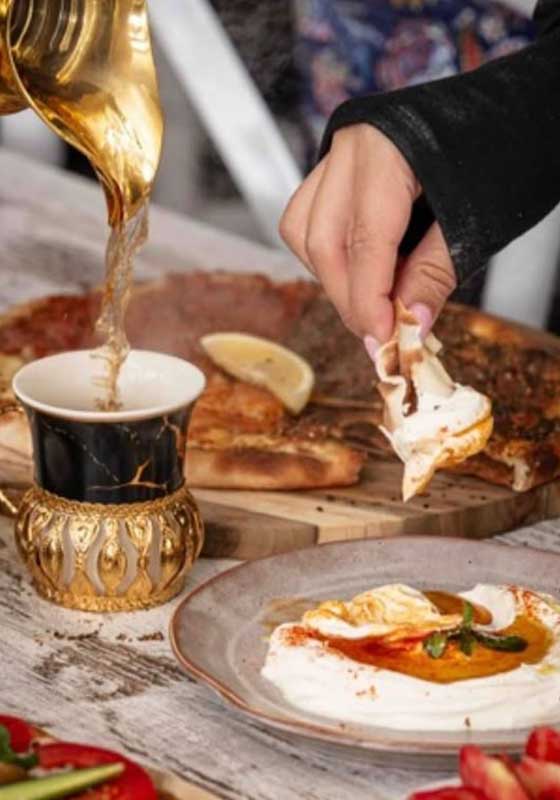
Some are rolled up and eaten like a wrap, others are sliced and shared. Every bakery has its own take and every Lebanese person has their favourite. Want to go all out? Order one with kishk (a fermented yoghurt and bulgur spread) and wash it down with sweet mint tea.
Israel – Shakshuka
A dish long beloved among North Africans, shakshuka is a dish known for its comforting combination of eggs poached in a rich, spiced tomato sauce. A staple across countries like Tunisia, Morocco, Libya and Egypt, the name ‘shakshuka’ originates from the Maghrebi Arabic word for ‘mixed’, reflecting the medley of flavours and ingredients in the dish.
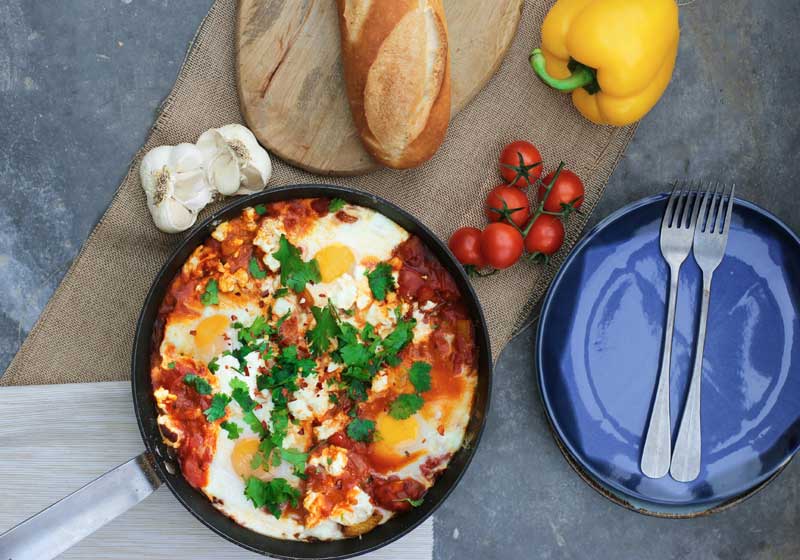
Its roots trace back to the mid-16th Century, following the introduction of tomatoes and peppers to North Africa as part of the Columbian Exchange. In Israel, the dish grew in popularity during the 1950s and ’60s when Jewish immigrants from North Africa brought it with them.
UAE – Balaleet
Finally, while the thriving cities of Dubai and Abu Dhabi are certainly not short on Western-style breakfast offerings, a more traditional dish is balaleet - an Emirati breakfast dish that beautifully blends sweet and savoury flavours. Made with sweetened vermicelli noodles flavoured with cardamom, saffron and rose water, it’s topped with a thin, savoury egg omelette.
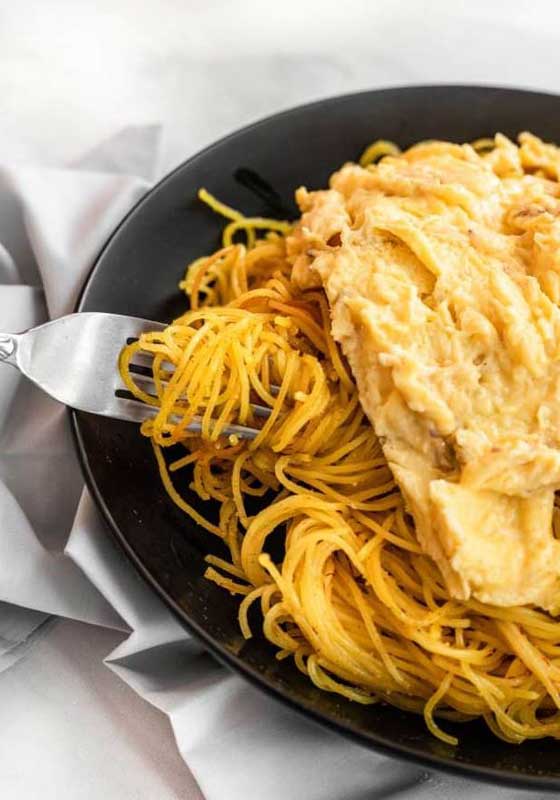
Photo credit: Every Little Crumb.
The contrast of the spiced noodles and the silky eggs creates a comforting, aromatic meal that's often served during special occasions or leisurely weekend breakfasts. Typically enjoyed with chai karak or Arabic coffee, balaleet is a nostalgic taste of home for many in the UAE and indeed the Gulf.







